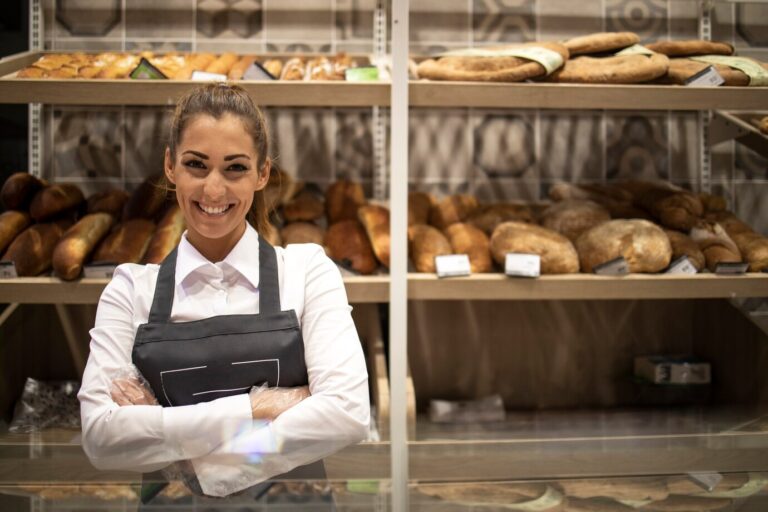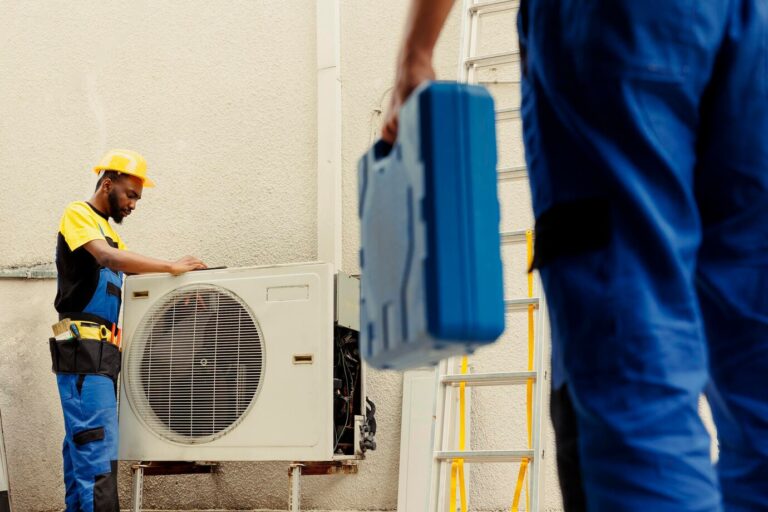Trade Occupations
Evaluating your trade skills is essential if you wish to immigrate to Australia. In order to successfully navigate trade occupation assessments, you may rely on CDR Report writing for expert guidance.
Your trade skills are valued in Australia
We utilise standards that are pertinent to each of the 27 trade vocations that we analyse to determine whether or not your talents are compatible with the appropriate professional trade in Australia. VETASSESS is an authority on skills assessment that is approved by the Australian government.
If you are applying for skilled migration to Australia, you could be required to complete a trade skills assessment from a registered training organisation (RTO) that is accredited by Trade and Investment Australia (TRA), such as VETASSESS. This examination is included in the skilled migration process.
After you have completed the assessment of your abilities, the next step is to select the appropriate vocation and career path for your trade.

We Evaluate Popular Trade Jobs

Baker ANZSCO Code: 351111
Baker
ANZSCO Code: 351111
Occupation Description: A baker uses heat sources to create and sell bread and other flour-based items. Bakers produce pastries, cakes, biscuits, buns, and bread.
Job Responsibilities:
- Assessing the quality of raw materials and measuring ingredients
- Preparing pans and kitchenware
- Kneading, maturing, cutting, moulding, and shaping dough
- Making pastry fillings
- Monitoring baking times and oven temperatures
- Shaping, filling, baking, emptying, and cooling dough batches
- Frosting and decorating baked goods
- Ensuring equipment meets safety standards
- Operating dough cutting and shaping machinery
Assessment Process:
- Documentary Evidence Assessment:
- Submit documentation proving expertise, experience, and knowledge.
- Include training certificates, employment proof, video and photo evidence, and supervisor reports.
- Technical Interview:
- An interview to assess technical proficiency, problem-solving, and communication skills.
Required Skills and Knowledge:
- Qualification: FBP30521 Certificate III in Baking
- Core Competencies: Proficiency in various baking methods, recipe knowledge, ingredient interactions, precision, creativity, time management, physical endurance, adaptability, problem-solving, food safety, communication, teamwork, customer service, presentation skills, and continuous learning.
Core Units
| Code | Title |
| FBPWHS2001 | Participate in work health and safety processes. |
| FBPFSY2002 | Apply food safety procedures. |
| FBPOPR2069 | Use numerical applications in the workplace. |
| FBPRBK3015 | Schedule and produce bakery production. |
| FBPRBK2002 | Use food preparation equipment to prepare fillings. |
| FBPRBK3001 | Produce laminated pastry products. |
| FBPRBK3002 | Produce non-laminated pastry products. |
| FBPRBK3009 | Produce biscuits and cookie products. |
| FBPRBK3008 | Produce sponge cake products. |
| FBPRBK3010 | Produce cake and pudding products. |
| FBPRBK3018 | Produce basic artisan products. |
| FBPRBK3005 | Produce basic bread products. |
| FBPRBK3007 | Produce speciality flour bread products. |
| FBPRBK3006 | Produce savoury bread products. |
| FBPRBK3014 | Produce sweet yeast products. |
Elective Units
| Code | Title |
| SITXHRM001 | Coach others in job skills. |
| FBPRBK4001 | Produce artisan bread products. |
| FBPRBK3011 | Produce frozen dough products. |
| FBPRBK4003 | Produce gateaux, tortes and entremets. |
| FBPRBK3004 | Produce meringue products. |
| FBPRBK3003 | Produce specialist pastry products. |
| SIRXSLS001 | Sell to the retail customer. |
| FBPRBK3016 | Control and order bakery stock. |
NOTE: denotes a prerequisite that must be met before moving on to a unit.
Skills of a Baker:
- Baking Techniques
- Recipe Knowledge
- Ingredient Understanding
- Accuracy and Precision
- Creativity
- Time Management
- Muscular Endurance
- Adaptability
- Problem-Solving
- Food Safety Knowledge
- Communication
- Teamwork
- Customer Service
- Attention to Presentation
- Continuous Learning
Contact Us: Get a Free Consultation
FAQ:
- What are a baker’s main responsibilities?
- Designing and preparing a range of bakery goods, assessing raw materials, measuring ingredients, making dough and pastries, monitoring baking, and ensuring product quality.
- What credentials are needed in Australia to work as a baker?
- FBP30521 Certificate III in Baking is typically required.
- What goes into the evaluation procedure for prospective bakers?
- Stage 1: Documentary Evidence Assessment.
- Stage 2: Technical Interview assessing technical skills and communication.
- What are the essential abilities needed to succeed in the baking industry?
- Baking techniques, ingredient understanding, precise measurements, creativity, time management, adaptability, problem-solving, food safety, communication, teamwork, customer service, presentation skills, and continuous learning.
- How can prospective bakers advance their knowledge and abilities?
- Participate in ongoing education, workshops, and professional development to stay updated on baking trends and techniques, and gain practical experience through apprenticeships or internships.
Automotive Electrician

Automotive Electrician ANZSCO Code: 321111
Automotive Electrician
ANZSCO Code: 321111
Automotive electricians install, inspect, maintain, and repair all electrical components of automobiles. This involves analyzing technical diagrams, diagnosing issues, and resolving malfunctions.
Key Responsibilities:
- Diagnose and Repair: Identify and fix electrical problems using test equipment.
- Install Electrical Systems: Install and repair electrical wiring and components.
- Customer Interaction: Discuss issues, estimated costs, and repairs with clients.
- Technical Documentation: Complete job reports and other necessary documentation.
- System Maintenance: Adjust engine control systems and inspect vehicle lighting.
Assessment Process:
- Documentary Evidence Assessment:
- Verify training and employment documents.
- Include evidence such as supervisor reports and employment experience.
- Technical Interview:
- Assess technical proficiency, communication, problem-solving skills, and practical knowledge.
Required Qualification:
- AUR30320 Certificate III in Automotive Electrical Technology.
Skills and Knowledge:
- Core Competencies:
- 21 core units such as “Test and repair basic electrical circuits” and “Diagnose and repair starting systems.”
- Elective Competencies:
- 11 elective units tailored to specific skills and workplace requirements.
Core Units
| code | Title |
| AURAEA002 | Follow environmental and sustainability best practices in an automotive workplace. |
| AURASA102 | Follow safe working practices in an automotive workplace |
| AURETR112 | Test and repair basic electrical circuits |
| AURETR125 | Test, charge and replace batteries and jump-start vehicles |
| AURETR129 | Diagnose and repair charging systems |
| AURETR130 | Diagnose and repair starting systems |
| AURETR131 | Diagnose and repair ignition systems |
| AURTTA118 | Develop and carry out diagnostic test strategies |
| AURTTE104 | Inspect and service engines |
| AURETR124 | Diagnose and repair compression ignition engine management systems. |
| AURETR123 | Diagnose and repair spark ignition engine management systems |
| AURETR143 | Diagnose and repair electronic body management systems |
| AURETK002 | Use and maintain electrical test equipment in an automotive workplace |
| AURETR006 | Solder electrical wiring and circuits |
| AURETR007 | Apply knowledge of automotive electrical circuits and wiring systems |
| AURETR009 | Install vehicle lighting and wiring systems |
| AURETR010 | Repair wiring harnesses and looms |
| AURETR027 | Install ancillary electronic systems and components |
| AURETR128 | Diagnose and repair instruments and warning systems |
| AURETR132 | Diagnose and repair automotive electrical systems |
| AURETR135 | Apply knowledge of petrol and diesel engine operation |
Elective Units
| Code | Title |
| AURAFA002 | Read and respond to automotive workplace information |
| AURAFA103 | Communicate effectively in an automotive workplace |
| AURAMA001 | Work effectively with others in an automotive workplace |
| AURETR014 | Inspect, test and service starting systems |
| AURTTA104 | Carry out servicing operations |
| AURTTW001 | Carry out soft soldering techniques |
| AURETR013 | Inspect, test and service charging systems |
| AURTTK102 | Use and maintain tools and equipment in an automotive workplace |
| AURETR011 | Install basic ancillary electrical systems and components |
| AURETR122 | Diagnose and repair vehicle dynamic control systems |
| AURETR144 | Diagnose and repair integrated engine and transmission management systems |
Essential Skills:
- Technical expertise
- Safety awareness
- Attention to detail
- Communication skills
- Physical fitness
- Customer service
FAQs:
- Credentials Required: AUR30320 Certificate III in Automotive Electrical Technology.
- Assessment Steps:
- Documentary Evidence Assessment.
- Technical Interview.
- Necessary Competencies: Technical skills, safety awareness, attention to detail, communication skills, and customer service.
- Competency Units: 32 units in total (21 core, 11 elective).
- Sample Core Units: “Test and repair basic electrical circuits,” “Diagnose and repair starting systems,” “Inspect and service engines.”
This summary provides a concise overview of the key aspects of becoming an automotive electrician, including responsibilities, assessment process, required qualifications, and essential skills.
Airconditioning and Refrigeration Mechanic

Airconditioning and Refrigeration Mechanic (ANZSCO Code: 342111)
Occupation Description: Airconditioning and Refrigeration Mechanics assemble, install, maintain, and repair air conditioning and refrigeration systems. This includes residential, commercial, and industrial systems, as well as combined heating, ventilation, and cooling systems.
Key Responsibilities:
- Install, maintain, and repair refrigeration and air conditioning systems.
- Interpret drawings and specifications to determine installation requirements.
- Drill holes, install brackets, and cut, bend, and thread pipes.
- Install and maintain copper lines for various systems.
- Connect equipment using bolting, soldering, riveting, welding, and brazing.
- Charge systems with gas or fluid, test for leaks, and inspect and adjust system mechanisms.
- Diagnose issues, replace faulty parts, and modify system controls.
- Maintain records of defects and solutions.
Assessment Stages:
Stage 1: Documentary Evidence Assessment
- Submit documentation to prove your training, employment, skills, and knowledge.
- Refer to the Evidence Guide for required documents.
- Follow the Pathway 1 or Pathway 2 guidelines for employment experience and activities.
Stage 2: Technical Interview
- An interview to assess your technical skills, communication, problem-solving abilities, and overall performance.
- Refer to the Technical Assessment Guide for more details.
Stage 3: Practical Assessment
- Demonstrate your trade skills through tasks related to the workplace.
- Practical evaluations provide proof of your knowledge, skills, and behavior.
- More information can be found in the Technical Assessment Guide.
Skills and Knowledge Required:
- UEE32220 Certificate III in Air Conditioning and Refrigeration.
- Demonstrate competency in various trade units relevant to Australian workplaces.
Core Units
| Code | Title |
| UEECD0007 | Apply work health and safety regulations, codes and practices in the workplace. |
| UEECD0016 | Document and apply measures to control WHS risks associated with electrotechnology work |
| UEECD0019 | Fabricate, assemble and dismantle utility industry components. |
| UEECD0020 | Fix and secure electrotechnology equipment. |
| UEECD0042 | Solve problems in ELV single-path circuits. |
| UEECD0051 | Use drawings, diagrams, schedules, standards, codes and specifications. |
| UEECO0010 | Participate in refrigeration and air conditioning work and competency development activities. |
| UEERA0031 | Diagnose and rectify faults in air conditioning and refrigeration control systems. |
| UEERA0035 | Establish the basic operating conditions of air conditioning systems. |
| UEERA0036 | Establish the basic operating conditions of vapour compression systems. |
| UEERA0044 | Find and rectify faults in single-phase motors and associated controls. |
| UEERA0045 | Find and rectify faults in three-phase motors and associated controls. |
| UEERA0050 | Install refrigerant pipe work, flow controls and accessories. |
| UEERA0051 | Install, commission, service and maintain air conditioning systems. |
| UEERA0052 | Install, commission, service and maintain low-temperature systems. |
| UEERA0053 | Install, commission, service and maintain medium-temperature systems. |
| UEERA0059 | Prepare and connect refrigerant tubing and fittings. |
| UEERA0062 | Recover and charge refrigerants. |
| UEERA0079 | Safely handle refrigerants and lubricants. |
| UEERA0081 | Select refrigerant piping, accessories and associated controls. |
| UEERA0092 | Solve problems in low-voltage refrigeration and air-conditioning circuits. |
| UEERA0094 | Verify functionality and compliance of refrigeration and air conditioning installations. |
| UEERE0001 | Apply environmentally and sustainable procedures in the energy sector. |
| UEERL0001 | Apply environmentally and sustainable procedures in the energy sector. |
| UEERL0001 | Attach cords and plugs to electrical equipment for connection to a single phase 230 Volt supply. |
| UEERL0002 | Attach cords, cables and plugs to electrical equipment for connection to 1000 V a.c. or 1500 V d.c. |
| UEERL0004 | Disconnect – reconnect electrical equipment connected to low voltage (LV) installation wiring |
| UEERL0005 | Locate and rectify faults in low voltage (LV) electrical equipment using set procedures. |
Elective Units
| Code | Title |
| UEERA006 | Apply safety awareness and legal requirements for carbon dioxide refrigerant. |
| UEECD0007 | Apply safety awareness and legal requirements for flammable refrigerants. |
| UEERA0074 | Resolve problems in industrial refrigeration systems. |
| UEERA0066 | Repair and service of carbon dioxide refrigeration systems. |
| UEERA0070 | Resolve problems in central plant air conditioning systems. |
| UEERA0084 | Service and repair self-contained flammable refrigerants, air conditioning, and refrigeration systems. |
| UEERA0067 | Repair and service secondary refrigeration systems. |
NOTE: denotes a prerequisite that must be met before moving on to a unit.
Offshore Technical Skills Record (OTSR):
- Issued by VETASSESS after passing the practical skills assessment for the UEE32220 Certificate III.
- Requires a period of supervised employment and Australian context gap training.
Eligibility:
- Contact a registered training organization (RTO) recognized by TRA for skills assessment.
- Obtain an OTSR if you pass.
- Apply for a trainee license through the Australian Refrigeration Council.
- Complete gap training under supervision.
- Apply for a Certificate III qualification and a full license upon successful completion of gap training.
Visa and Licensing:
- VETASSESS provides the Certificate III qualification after reviewing gap training records.
- An administrative fee is charged for providing the qualification.
For detailed guidelines and documentation requirements, refer to the VETASSESS and TRA websites.
VETASSESS (Vocational Education and Training Assessment Services) provides skills assessments for a range of trade occupations under the Australian and New Zealand Standard Classification of Occupations (ANZSCO). Here are some of the key trade occupations covered by VETASSESS, along with their corresponding ANZSCO codes:
- Automotive Electrician (321111)
- Baker (351111)
- Bricklayer (331111)
- Butcher or Smallgoods Maker (351211)
- Cabinetmaker (394111)
- Carpenter (331212)
- Carpenter and Joiner (331211)
- Chef (351311)
- Cook (351411)
- Diesel Motor Mechanic (321212)
- Electrician (General) (341111)
- Electrician (Special Class) (341112)
- Fitter (General) (323211)
- Fitter and Turner (323212)
- Fitter-Welder (323213)
- Furniture Finisher (394211)
- Joiner (331213)
- Motor Mechanic (General) (321211)
- Motorcycle Mechanic (321213)
- Panelbeater (324111)
- Pastrycook (351112)
- Plumber (General) (334111)
- Roof Plumber (334115)
- Sheetmetal Trades Worker (322211)
- Solid Plasterer (333212)
- Stonemason (331112)
- Vehicle Painter (324311)
- Wall and Floor Tiler (333411)
- Welder (First Class) (322313)
This list is not exhaustive, and VETASSESS assesses a wide range of other trade occupations as well. For the most accurate and up-to-date information, you can visit the VETASSESS official website or consult their specific guidelines and lists of occupations for which they provide assessments.
Looking for expert CDR Writer for VETASSESS Skill Assessment?
The requirements and rules of Engineers Australia may make it difficult to create a CDR Report. Our expert engineers have helped numerous people secure VETASSESS approval for their reports using strong projects.
Contact Our Team

